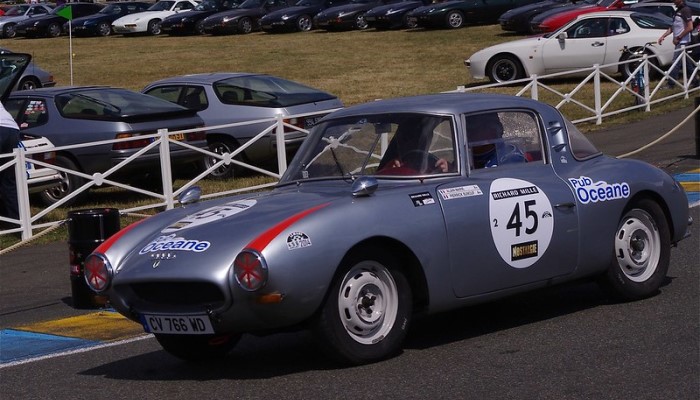DKW Monza

Photo: "1956 DKW Monza" by Dave Hamster
A Prime Example of German Automotive Design
The DKW Monza is one of the finest examples of German automotive design and it's a shame this car wasn't in production for longer.
For DKW, the fifties were a silver age. Having restored the production of motorcycles and cars, DKW managed to balance somehow. But the company remained a regional player.
Few cars were exported outside Germany; the situation with motorcycles was better. The US market could only be a dream. The company clearly needed PR, and there is no better PR for an automaker than motorsport.
When racing drivers Günter Ahrens and Albert W. Mantzel entered the DKW management office with a proposal to build a sports car on the DKW 3=6 Sonderklasse chassis, they met with enthusiastic approval of this project.
In addition to possible victories, the sports car was supposed to diversify the DKW model range and, as the company's managers hoped, help penetrate the US market. The Porsche experience was before their eyes.
Presentation and Basic Specifications
The project started in 1954; the prototype was presented to the public at the Frankfurt Motor Show in 1955; sales started in early 1956. Moreover, the car was well received on the American market.
The body of the DKW Monza was made of glass fiber-reinforced polyester. The production of the bodies was entrusted to Dannenhauer & Stauss from Stuttgart, Germany. The engine is in-line, two-stroke, three-cylinder, with a displacement of 55 cid (896 cc) and a power of 40 hp.
This is certainly not a lot, but the car turned out to be very light, so it accelerated to 87 mph (140 kph) without any problems. As you can see, they loved building plastic cars with two-stroke engines on both sides of the German border.
Engine Specs
| Engine Type | 2-stroke 3 cylinder |
| Layout | Front engine, RWD |
| Displacement | 55 cid (896 cc) |
| Power | 40 hp |
| Power/Weight | 51 hp / Tone |
Performance
| 0-100 kph (0-62 mph) | 24,0 s |
| Top Speed | 87 mph (140 kph) |
DKW Monza as a Record Holder
DKW Monza actively participated in various competitions. This car set five world records in the class of cars with engines with a displacement of 1,100 cc (67 cid). One of the records was set on the track in Monza, which was the reason to name the car after the famous race track. Here are all five...
Five international automobile records in Class G (up to 1100 cc).
- 4000 miles at 140.839 kph
- 48 hours at 140.961 kph
- 5000 miles at 138.656 kph
- 10000 kilometers at 139.453 kph
- 72 hours at 139.459 kph
Production Numbers
The DKW Monza was produced from 1956 to 1958. Production was put to an end by the winding down of production of the basic model DKW 3=6. It was not practical to produce a chassis just for the Monza. The car cost a lot of money. 10,500 marks is very respectable money.

Photo: "DKW Monza" by andreboeni
There are discrepancies in the number of cars produced; the figure ranges from 75 to 80 units. During production, the car underwent slight external changes. In later examples, the shape of the hood changed, the Auto Union emblem appeared on the radiator lining—four rings—and the rear brake lights changed.
DKW Monza in Today's Market
Today, the price of a well-maintained DKW Monza can range anywhere between $20,000 to $70,000. With its sleek design, historical significance, and limited availability, the DKW Monza has become a highly sought-after car by collectors, making it a valuable and expensive addition to their collection.

The problem is that in today's market it is a real art to find this model. It is estimated that there are about 50 of them left today. This can affect the price in many ways. Of course, at a higher price.
The price of DKW Monza today is not just determined by its historical significance, but also several other factors. One of the main factors is the car's condition. Well-maintained and restored Monzas can fetch a higher price than those that are not in good condition. The rarity of the car also plays a significant role in its price.
The history and ownership of the car can also affect its price. If the car has been owned by a notable figure or has a significant racing history, it can add to its value. Lastly, the demand for the car also plays a significant role in determining its price. As the demand for DKW Monza increases, so does its price.

Unique Car Zone Team
A group of several fans of everything that moves on four wheels, a few article creators, a couple of marketing strategists, designers, web developers, and lots of coffee.






